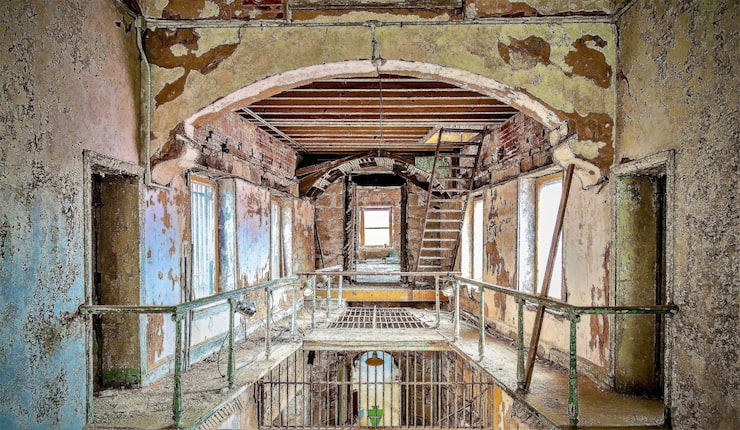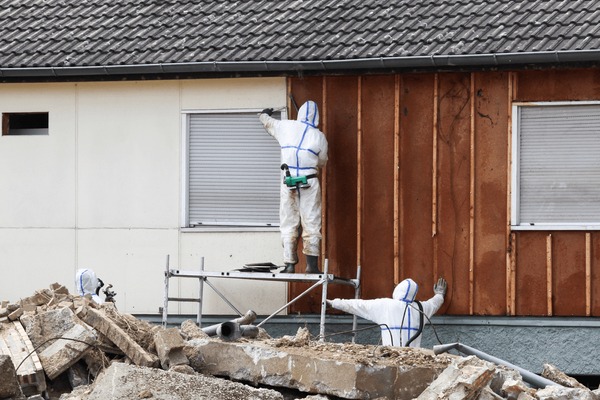Australia’s rich architectural heritage includes beautiful construction and architectural marvels. However, they often hide a dangerous material, i.e., asbestos, which was popular as a building material between 1930 to 1980. Thus, being able to manage it safely ensures both public health and the protection of our historic buildings.
Repair and restoration work on heritage buildings are common. And an assumption that a heritage building is too old to contain asbestos might not always be accurate, especially in the context of Australia. Though this fibrous mineral was popular in the 20th century, cases of its use have been found dating back to the 1800s. Thus, it is important to conduct repair and restoration works with effective asbestos management.
Let’s take a look at the use of asbestos in Australia’s historic heritage buildings and how it can be effectively managed through asbestos analysis and environmental site assessments to ensure public safety.
The History of Asbestos Use in Australian Buildings
In the 1930s, Australia saw widespread use of unprocessed asbestos in construction, most of it important as an industrial material. Its low thermal conductivity and ability to fireproof buildings were a blessing for the construction industry, and the reason why it became so popular.
Between the years 1930 and 1983, Australia, as a nation, imported close to 1.5 million tonnes of asbestos. Further, asbestos mining in Australia continued till 1984. Additionally, studies state that during this period of asbestos use, close to 13 million tonnes of asbestos-containing products were installed.
Even after the first regulations on asbestos use were placed in 1978, it remained a fairly popular building material. Only with the 2003 nationwide ban, the use of asbestos in Australia was stopped in building and construction. This ban on asbestos prevented its use, re-use, storage, sale, import, transport, and manufacturing in Australia.
As a result, many buildings in Australia that were built between 1930 and 1980 contain asbestos in one form or the other.
Why Heritage Buildings in Australia are at Risk
Though the first cases of asbestos use in Australia were found in the 1930s, it was used heavily between the 1940s and 1980s. Thus, many, if not all, heritage buildings contain asbestos in one form or the other.
The common heritage sites that are affected due to the presence of asbestos are schools, churches, government buildings, and old homes. Further, the areas where asbestos is often found include the roofing, insulation, wall sheeting, flooring, and pipe lagging.
As the asbestos-containing materials deteriorate with time, they release small amounts of asbestos fibres. Continuous exposure can cause lung cancer, mesothelioma, and asbestosis in people. During repair and renovation work, asbestos-containing areas can be further disturbed, leading to the release of asbestos fibres.
Thus, asbestos testing, management, and monitoring through environmental site assessments in heritage Australian buildings is key.
Legal Responsibilities in Australia
In addition to the threats that asbestos poses to human health, work safety laws also dictate the standards for asbestos monitoring and regulation in the workplace and at job sites.
The Work Health and Safety (WHS) laws regarding asbestos make provisions for the following:
- Identification and assessment of asbestos and asbestos-containing materials (ACM) through effective asbestos analysis and testing.
- Maintenance of a thorough and updated asbestos register.
- A thorough Asbestos Management Plan that effectively eliminates/ minimises and manages the risk of asbestos exposure.
- A safe removal and disposal plan for asbestos.
- Routine health monitoring of the workers.
- Training sessions and emergency procedures for response plans and safe work practices.
- Routine consultations with environmental experts and consultants.
Further, Safe Work Australia places the responsibility of asbestos management and monitoring with the responsible managers and contractors, necessitating proper site and soil evaluation. In case of properties, the obligation for routine asbestos monitoring and management lies with the property owners and managers.
When it comes to protecting heritage buildings, certain laws may overlap. However, compliance needs to be maintained with both. Thus, the scope of work and SOPs need to balance building preservation alongside worker and resident safety.
This necessitates asbestos risk assessment, alongside non-destructive testing and management of asbestos, to be performed by trained professionals.
Identifying Asbestos in Heritage Buildings
Asbestos is a highly hazardous material, and the effects of exposure are observed years after exposure. This makes it important to opt for professional asbestos testing, analysis, and inspections by the way of employing licensed asbestos assessors and surveyors. This ensures:
- Prevention of asbestos exposure and associated medical conditions.
- Adherence to legal safety and compliance norms.
- Comprehensive assessments in ACM (asbestos-containing materials) identification and associated risks.
- Preventing costly remediation work later.
To identify if a heritage building contains asbestos, the following methods can be employed:
- Visual inspection of places that might contain asbestos, such as pipe insulation, ceiling tiles, floor tiles, fireplaces, cement products, and roofing materials.
- Checking the building’s age, records, and history.
- Looking into past environmental site assessments, dilapidation surveys, and reports.
- Opting for non-destructive testing methods such as X‑ray fluorescence (XRF) analysis tests.
This helps learn more about the presence of asbestos while preserving the integrity of the heritage structure.
Management vs Removal – Which Is Better?
Asbestos management is often preferred over complete removal, which usually requires extensive work. This usually involves the encapsulation or sealing of asbestos-containing places and materials with minimal disturbance, so that the asbestos can stay in place.
By opting for asbestos management, the building’s integrity can be preserved. However, it will require routine monitoring and maintenance work, which has to be added to your building maintenance budget.
On the other hand, asbestos removal is the route of choice when asbestos management fails or is not feasible. Further, controlled removal might be a necessity when the asbestos-containing structure or material is deteriorating or poses a risk.
This will be disruptive and even potentially damaging to the heritage building. Thus, it can be taken up with the help of experts who have access to specialised equipment. Further, considerations need to be made for heritage structures, which involves working with conservation architects and asbestos experts.
Safe Practices During Renovation or Restoration
To ensure the safety of workers, occupants, visitors, and residents, the following practices need to be adopted:
- Mandatory use of licensed asbestos removalists.
- Conducting asbestos analysis and site and soil evaluation before the work starts.
- Using general safety precautions, such as air monitoring, PPE, and containment zones.
- Effective asbestos identification and demarcation before starting any renovation work.
- Using heavy-duty plastic sheeting and covers to effectively contain the asbestos-containing area.
- Wet removal of asbestos-containing materials (ACM) to manage and minimise exposure to asbestos dust and fibres.
- Ensuring proper ventilation, safe disposal, and avoiding disturbance of ACM.
- Avoiding the use of power tools and compressed air.
- Conducting regular air monitoring for asbestos.
Protecting People and Preserving History
Safe asbestos management practices in heritage buildings protects workers, residents, and visitors. However, it is also important to preserve Australia’s heritage character while ensuring modern safety standards. This ensures:
- Holding on to Australia’s diverse cultural identity.
- Economic benefits from attracting tourists and visitors.
- Upholding public trust, safety, and sustainability, while conserving history and resources.
While it invites challenges from legal and environmental regulations, and striking a balance between modern restoration and preserving history, modern techniques and risk management measures have made this possible.
Wrapping Up
Heritage buildings in Australia often contain asbestos that must be managed carefully. Australian laws call for strict compliance with WHS standards and norms that govern asbestos removal. Thus, it is important to strike a balance necessary to ensure health, safety, and heritage preservation. Further, councils, property owners, and developers need to create thorough asbestos management plans.
Ensure Safety with Effective Asbestos Management in Heritage Buildings
Ready to preserve the historic integrity of heritage buildings? Contact a licensed asbestos assessor and conduct environmental site assessments and asbestos testing before starting any heritage building work.





